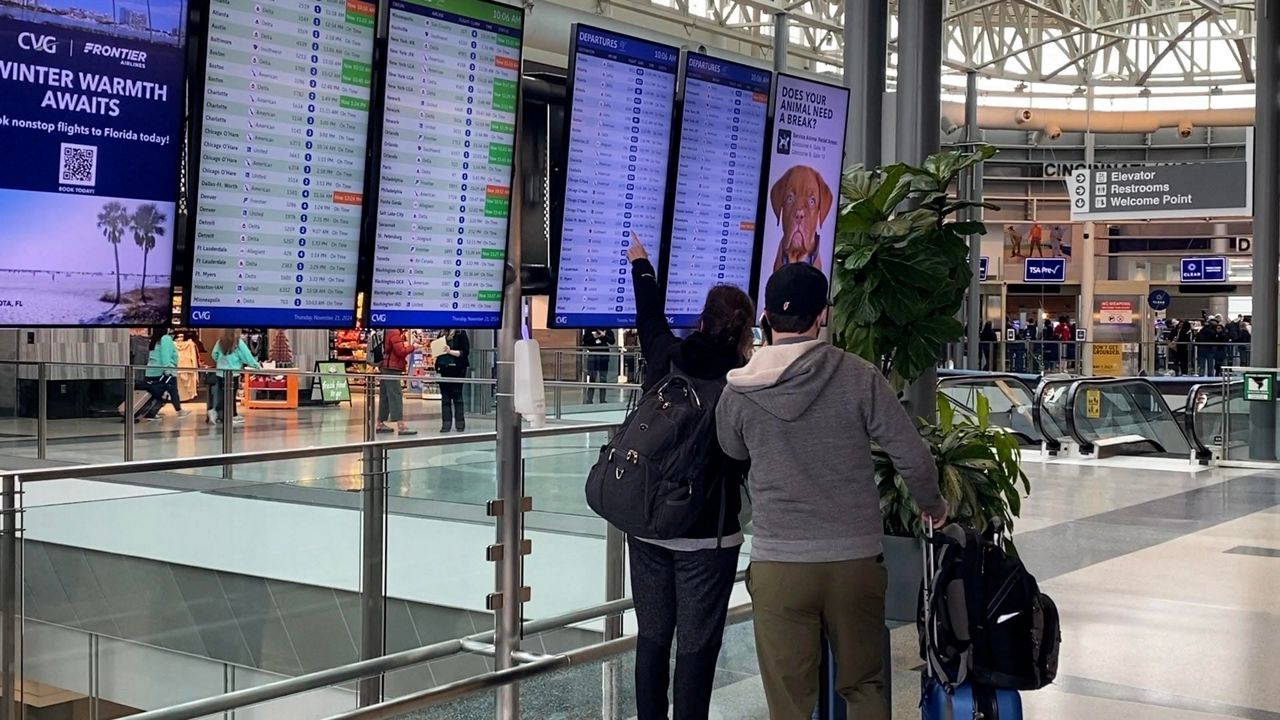Travel
Turku: Finland’s under-the-radar Nordic destination
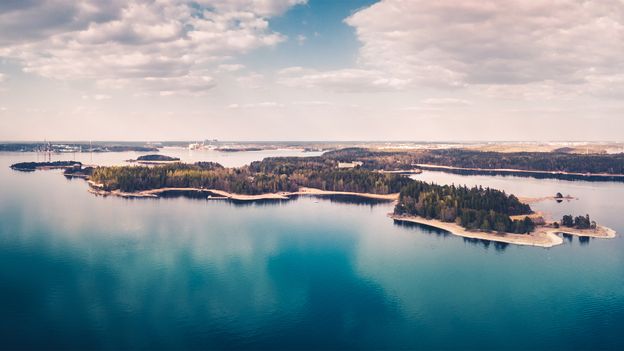
 Getty Images
Getty ImagesConsidered the gateway to the world’s largest archipelago and renowned for its food scene, Finland’s second city is well worth a detour.
Nordic destinations Stockholm and Copenhagen lure millions of visitors a year, many attracted by the cities’ upscale design, elevated food scenes and compelling histories. Yet, Finland’s first capital and oldest city, Turku, founded in 1229 along the banks of the River Aura, hits the same high notes as its neighbours, but without the crowds.
What’s more, this 200,000-person city on Finland’s south-west coast is also known as the gateway to the Finnish archipelago: a 40,000-island labyrinth that’s considered the largest in the world.
Known as Åbo to its predominantly Swedish-speaking inhabitants (a name which aptly means “living by the river”), Turku was once part of Sweden in the Middle Ages before becoming an autonomous Grand Duchy of the Russian Empire in 1809. Since Finland gained independence in 1917, the cosmopolitan hub has served as Finland’s second city, and thanks to its thriving food and cafe scene and its Seine-like river vibe, the city is sometimes called “the Paris of Finland”.
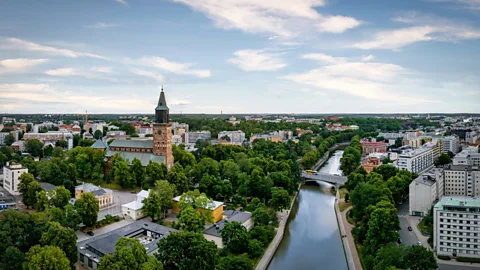 Getty Images
Getty ImagesTree-lined boulevards flanked by 19th-Century theatres, coffee shops and market halls – many with a sustainable throughline – fill Turku’s compact and walkable centre. I spent an hour flipping through new and used CDs and vinyl at the three-storey 8raita Record Store and shopped for vintage kimonos and theatre costumes, jewellery and dresses at Boutique Minne in the town centre. Nonprofit, cooperative book cafe Turku Kirjakahvila offers literature from Finnish and foreign publishing houses, self-published books and house-baked vegan pastries; Televisio Lifestyle Store sells a multi-chromatic clash of clothes, jewellery, shoes, bags, and gifts from the store’s eponymous label and Finnish and Nordic brands Katri Niskanen, Gauhar, Papu Design and NOT.
Tip:
The Turku Treasure Map is a printable booklet filled with great recommendations on the city’s food, art, design and local culture.
Above ground, the 13th-Century granite-and-stone Turku Castle stood guard over the Aura until it was reimagined as a Finnish history museum in 1993. Elsewhere, The Kakolanmäki Hill Museum showcases more recent developments, including the history of Kakola Prison, which was established in 1863 and housed some of the country’s most notorious villains and murderers until in 2007. Since then, Kakolanmäki, (“Kakola’s hill”), has been revitalised. You can opt to stay at the prison’s former psychiatric hospital, Forenom apartments, which now offer modern accommodations with a Nordic-chic wood-and-textile aesthetic, or Hotel Kakola, whose upscale rooms are located in the city’s former prison (the narrow cell room with simple bunk beds and barred windows is the most requested).
From the hotel, a pleasant stroll north-east along the river’s north bank takes you to Turku’s granite Art Museum, whose 7,600 works span the “golden age” of Finnish art, Finnish Surrealism and pop art at the turn of the 20th Century. A short walk away, Café Art is a seven-time recipient of the national Barista of the Year – a highly anticipated competition, since the Finns rank among the world’s biggest coffee drinkers.
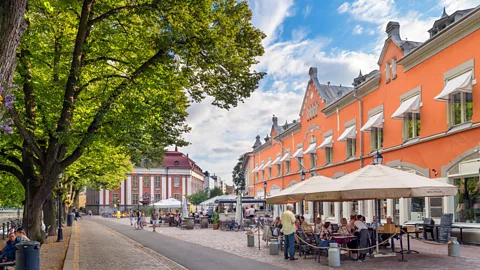 Alamy
AlamyIn the summer, outdoor concerts are held almost daily outside the Turku Cathedral, with plenty of vendors selling locally sourced food and wine. When Finland joined the EU in 1995, its ministers had to decide whether Finland was a Nordic country that received heating subsidies or a wine-producing nation, like France and Italy, which received different grants. Finland’s government opted to keep its citizens warm; today, Finland must label homegrown grape wine as “mild alcoholic beverage fermented from grapes”, prompting entrepreneurs to explore boozy expressions of lingonberries, cloudberries and sea buckthorn, which are slowly garnering attention from international sommeliers.
If you fancy a more familiar wine, you’ll find that, too. I spent an enjoyable hour supine in a deck chair, chatting with the vintners from urban winery Noita who are skirting the rules by hand-picking organic grapes from Burgenland, Austria, and transporting them to their facility in Finland’s Fiskars Village, 112km to the south-east, to make delicious natural Riesling, Grüner Veltliner and other blends.
The city’s food scene has been attracting international attention lately, too. After tasting-menu restaurant Kaskis earned Turku’s first Michelin star in 2022 (Finland’s first outside Helsinki), Michelin chose to launch its 2023 Nordic Countries Guide in Turku, highlighting the region’s local food culture. In Kaskis’s intimate and unassuming space on the ground floor of an apartment building, chefs and founders Simo Raisio and Erik Mansikka pair pristine perch and pike with celery and ingredients foraged sustainably in nearby forests, served on an eclectic mix of recycled plates and Mansikka’s hand-made ceramics. Mansikka is something of a posterchild for the ambitions of Turku’s dynamic food scene: as I wandered around town, his red Michelin star clavicle tattoo and impish grin decorated displays of pots and pans at kitchen stores all over.
He’s also a familiar sight at Turku Market Hall, where vendors supply home cooks and top-notch restaurants alike with fresh produce and products. I planned to wander the market’s 19th-Century red-brick halls before finding a restaurant for lunch, but instead, the smells emanating from shop-cum-lunch counter Herkkunuotta lured me to pull up a counter chair. Upbeat chef-fishmonger Johan Hellsten and his team develop catch-of-the-day dishes on the fly between wrapping packets of spotted crab and giant shrimp. That day, offerings included perch soup seasoned liberally with fragrant dill, cold-smoked and cured local rainbow trout, and reindeer two-ways: a mousse-filled tartlet, and cold-smoked and sliced with horseradish.
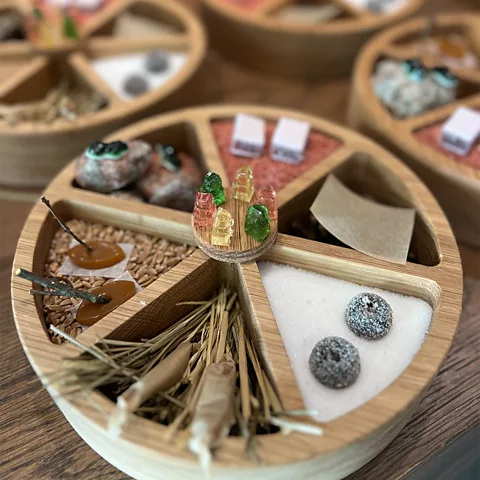 Gemma Zoë Price
Gemma Zoë PriceTurku is renowned for the quality of its local, seasonal ingredients, many of which are farmed or harvested on its nearby islands. In fact, the many thousands of islands and islets encompassing the Finnish archipelago (sometimes called the Turku archipelago) include autonomous municipalities that invite you to choose your own adventure – culinary or otherwise.
One of the closest is Ruissalo, part of Turku city (accessible via bus #8 from the city centre) and a former hunting island for Turku Castle’s court. One of my favourite ways to spend a Sunday is a massage at Ruissalo Spa before alternating between chilly sea water plunges and mad dashes back to the balmy warmth of the sauna.
From Turku, Finland’s many islands fan west along the Baltic Sea between the Gulf of Bothnia, the Gulf of Finland and Åland, an autonomous group of more than 6,500 islands within Finnish territorial waters – only 60 of which are inhabited. Thanks to the city’s airport, its twice-daily ferry departures to the region and frequent boat tours of the archipelago, Finland’s second city is considered the best gateway to these far-flung isles.
Despite its lofty latitude, Åland is often sunnier than the mainland. As spring arrives, the region comes alive as 1.5 million visitors swell its inhabited islands through the summer months, most bound for Åland’s capital, Mariehamn (Marie’s Harbour), which was established by Russia’s Czar Alexander II in 1861 and named for his wife. There’s plenty to do (I spent my days wandering the ruins of the Czar’s granite fortress and exploring glorious parks and museums) and plenty to eat and drink tucked away within the Torggatan pedestrian precinct’s red-and-yellow wooden houses.
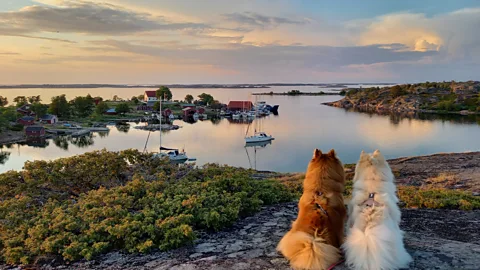 Visit Pargas Parainen
Visit Pargas ParainenFinland’s Everyman’s Right gives Finns and visitors alike the freedom to temporarily stay and camp out overnight anywhere – even in public parks and on private property, so long as you don’t cause damage or disturb the landowner. The archipelago is also accessible by year-round ferry service from Turku. Winter attracts those who enjoy cross-country skiing, ice-fishing and skating, post-sauna dips in the freezing Baltic or white-knuckling it to drive point-to-point over the frozen ocean when conditions permit.
But visiting from spring to early autumn has always been more my speed, when warmer weather signals the opening of The Archipelago Trail: a 250km “ring road” connected by a network of huge, free-to-ride electric yellow ferries that glide noiselessly between islands and invite leisurely exploration.
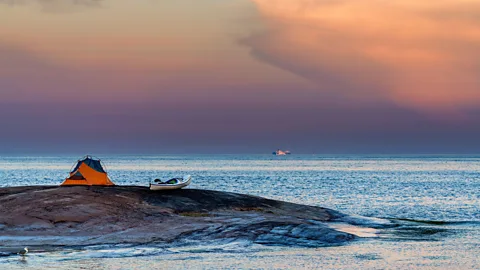 Alamy
AlamyOn a recent trip, my favourite sojourn was an afternoon spent at Hotel Hyppeis, a renovated village schoolhouse on Houtskär island (roughly three hours by car and ferry from Turku) where co-owners Sam and Outi Fagerlundin host overnight guests in simple rooms decorated with vintage furnishings and rugs woven from upcycled bed linens and towels. In the summer, the hotel’s former classroom hosts a series of multi-course dinners showcasing locally sourced lamb, potatoes grown in a field across the street and other products by a rotating cast of visiting chefs.
Disembarking from a sailboat, I was greeted on the deck by a violinist and staff carrying silver platters of crystal glasses of rose spritz, infused by petals from the garden. The menu that day was roast lamb two ways, Jerusalem artichoke and blue cheese cream soup with pear compote and a salty salmon dish fragrant with little star anise. They were flavours born from this relatively unexplored corner of Europe, and the perfect way to refuel after a day’s exploration.






